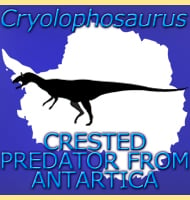Thanatotheristes
In Depth At the time of the genus description, Thanatotheristes is known only from very partially preserved skull and jaw bones. However, these bones show that Thanatotheristes was a large tyrannosaur, and one with a close similarity to Daspletosaurus. The discovery of Thanatotheristes has also added further evidence that the tyrannosaurs of Laramidia (the land … Read more


